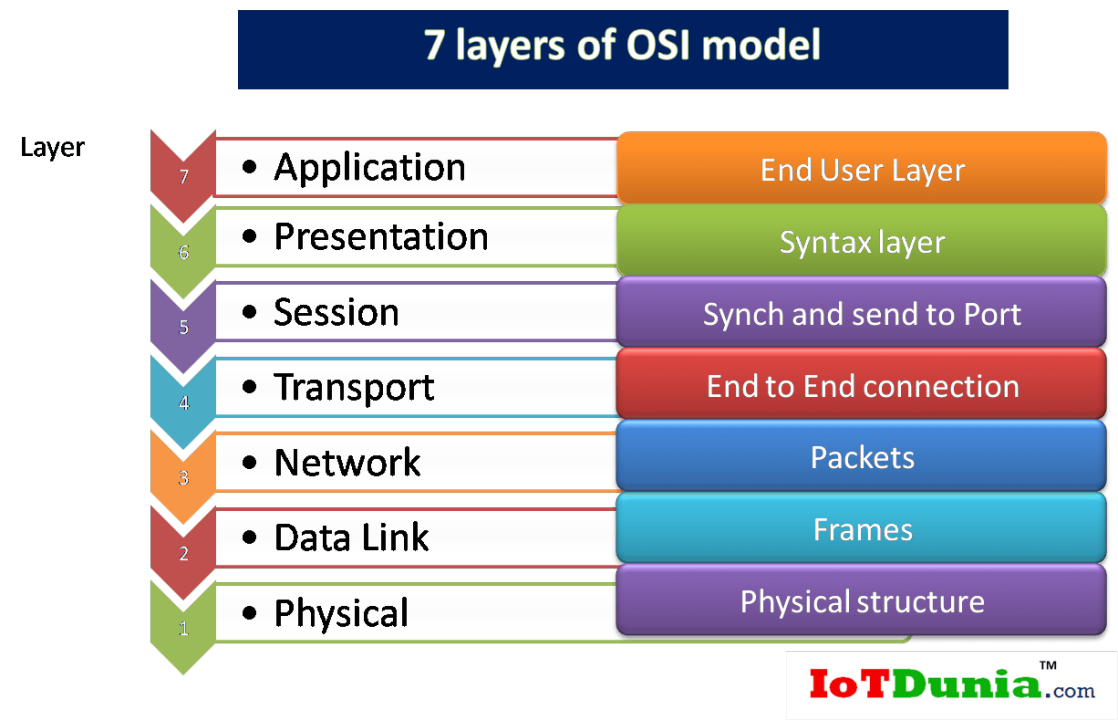The OSI (Open Systems Interconnection) model is a conceptual framework used to understand and standardize the functions of networking protocols and devices. It consists of seven layers, each responsible for specific tasks in the process of communication between two or more networked devices. Let's explore each layer in detail:
- Physical Layer (Layer 1):The physical layer is the lowest layer of the OSI model and deals with the physical transmission of data over the network medium.It
defines the electrical, mechanical, and procedural aspects of data transmission, including voltage levels, cable types, connectors, and data transmission rates.Examples of physical layer devices include network interface cards (NICs), hubs, repeaters, and cables (e.g., Ethernet cables, fiber-optic cables).
- Data Link Layer (Layer 2):The data link layer is responsible for providing error-free and reliable data transmission between adjacent network nodes over the physical layer.It
performs functions such as framing, addressing, error detection, and flow control.Ethernet switches, wireless access points, and network interface cards operate at the data link layer.Protocols operating at this layer include Ethernet, Wi-Fi (802.11), Point-to-Point Protocol (PPP), and Frame Relay.
- Network Layer (Layer 3):The network layer is responsible for the logical addressing, routing, and forwarding of data packets between different networks.It
determines the optimal path for data transmission, based on network topology, addressing, and routing tables.Routers operate at the network layer, performing functions such as packet forwarding and routing.Common network layer protocols include Internet Protocol (IP), Internet Control Message Protocol (ICMP), and Internet Group Management Protocol (IGMP).
- Transport Layer (Layer 4):The transport layer is responsible for end-to-end communication and ensures the reliable and efficient delivery of data between source and destination hosts.It
provides services such as segmentation, multiplexing, error detection, and flow control.Transmission Control Protocol (TCP) and User Datagram Protocol (UDP) are the two primary transport layer protocols.TCP provides reliable, connection-oriented communication, while UDP offers faster, connectionless communication.
- Session Layer (Layer 5):The session layer establishes, manages, and terminates communication sessions between applications running on different hosts.It
provides mechanisms for session establishment, maintenance, synchronization, and termination.Session layer protocols include NetBIOS (Network Basic Input/Output System) and Session Control Protocol (SCP).
- Presentation Layer (Layer 6):The presentation layer is responsible for data translation, encryption, and compression to ensure compatibility between different systems and applications.It
handles tasks such as data formatting, character encoding, and encryption/decryption.Common presentation layer standards include ASCII, EBCDIC, MIME (Multipurpose Internet Mail Extensions), and SSL/TLS (Secure Sockets Layer/Transport Layer Security).
- Application Layer (Layer 7):The application layer is the topmost layer of the OSI model and interacts directly with end-users and applications.It
provides network services to user applications, including file transfer, email, web browsing, and remote access.Protocols operating at the application layer include HTTP, FTP, SMTP, POP3, IMAP, DNS, SSH, and Telnet.
In summary, the OSI model divides network communication into seven layers, each responsible for specific functions and interactions. Understanding these layers is essential for designing, troubleshooting, and managing modern computer networks.
